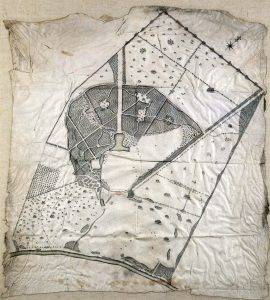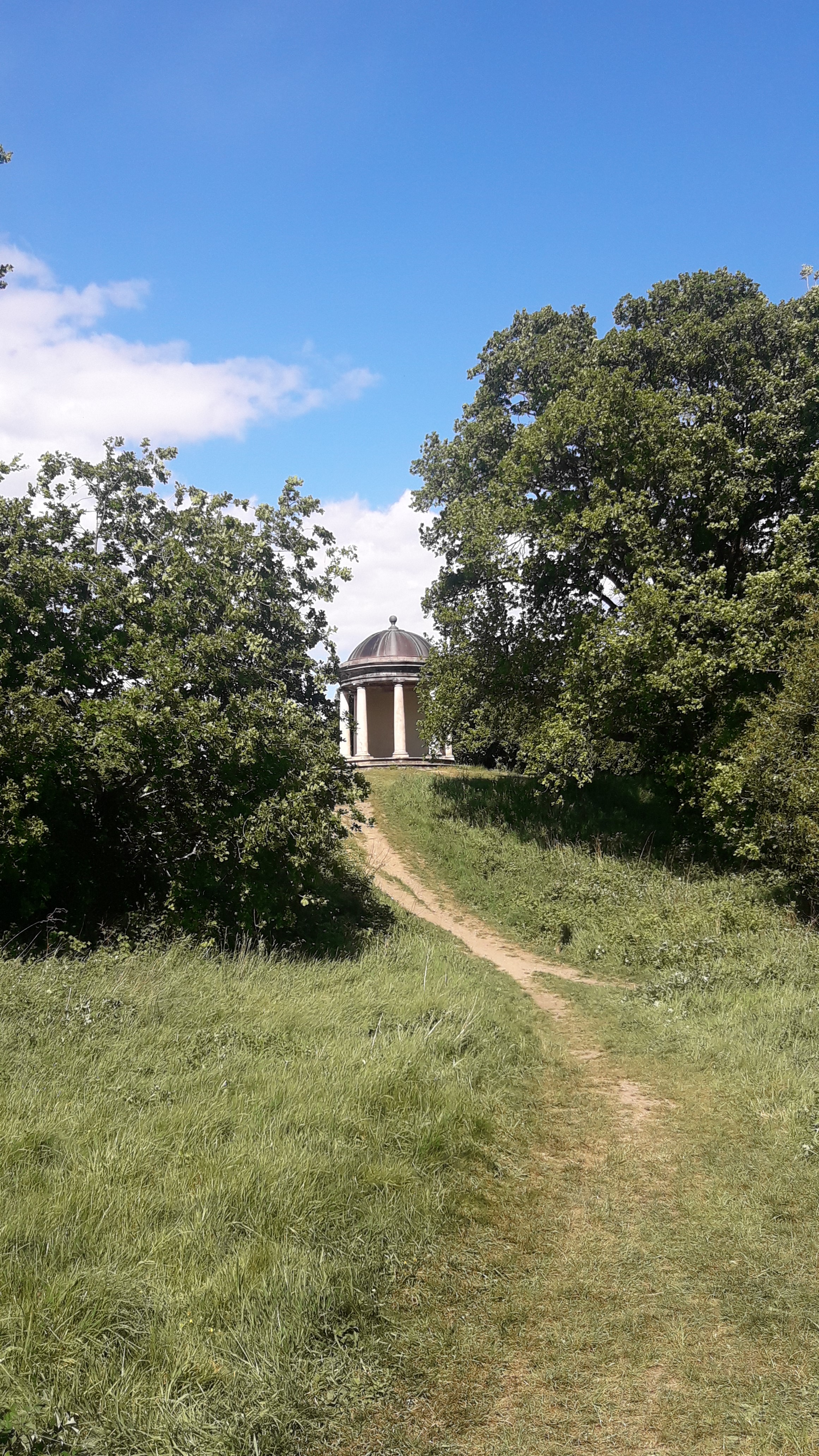When the newly married Lady Louisa took charge of the Castletown landscape in 1759, at the tender age of sixteen, she took over the care of a landscape which had a history going back longer than historical records did. Lady Louisa probably wasn’t aware of the Bronze Age burial site a few inches under the surface of her front lawn but the plaque now in situ reminds us of the fact that this site has been important to local people for thousands of years.
The Castletown demesne was the part of the Conolly lands which directly supported the house and the family who lived in it. It provided their food which came from the kitchen gardens, from the orchard, fish from the lake and river. Later, Louisa’s farmyard and dairy provided goods like milk, butter (apparently better than that at Carton) pork from the piggeries, pigeon from the dovecote and of course, venison from the deer parks. The onsite brewery produced their ale, the forest provided fuel. It also contained the family’s gardens and most importantly for this blog, their recreation space.
In 1588 the demesne, then owned by the Dongan family contained a castle, 500 acres, a fine house, garden of pleasure, orchard, woods and a hop yard. Little is known of the interventions made from then up to the Conollys time but it is clear from early maps that the parklands changed dramatically from the 1730s to the early 19th century and the majority of what we see today was envisioned and executed by our own dear Lady Louisa.
Louisa’s predecessor, Katherine’s landscape was in line with the formality of the architecture of the house at its heart. The formal landscape had formal axes and avenues which fanned out from the house to the edges of the demesne, each leading to a point of interest. Gardens were terraced, laid out in straight lines and formally planted to illustrate an order being put on nature.
Just as with her interventions in the house, Louisa’s interventions in the landscape were entirely romantic in nature. She embarked on the creation of a romantic Brownian style landscape, a sculpted natural landscape which appealed to all of the senses. She wanted a place that was pleasant to walk in, a place to escape the hustle and bustle of the main house, and a place where people could delight in nature.
Gone were the formal beds and straight avenues and in were attractive clumps of trees, sweeping curved walks along water features which intermittently revealed surprise points of interest such as a temple, a view of a ruin or a quaint little gothic lodge. Everywhere was carefully thought planting, the Batty Langley Lodge being surrounded by fragrant flowers. This planting was made possible by the ha has which surround the house and the river walks, ensuring that errant cattle didn’t eat the carefully maintained planting.
The heavier landscaping involved diverting the Crodaun stream under the present farmyard and the building of a dam in order to create a series of cascades down to the River Liffey. Sound was important here, the sound of running water a recurrent theme in Louisa’s landscape designs.
She created two walks along the Liffey. The upper Liffey walk giving views of the house, and the Lower, giving views of the Liffey, Donacumper and St. Wolstan’s Abbey.
These walks were ornamented by buildings and points of interest such as the temple, named Mrs Siddons Temple in honour of Louisa’s favourite actress, the bathing house which was functional as well as aesthetic, the ice house, and the Gothic facaded Batty Langley Lodge.
On the other end of the estate, where the lime avenue brings Celbridge village into the demesne, were the buildings intended for the use of the local people. Her school and the church maintained by her were located at the gates.
One of my favourite quotes from Louisa’s correspondence where she writes of the parklands is one from a letter to her sister Sarah, written in the summer of 1779:
Our weather is now charming again, and nobody can be busier than I am by the riverside, which I do think will be beautiful. The Pond is turned into a river and three cascades made in a cut, that is carried down to the river, which is very pretty. You cannot conceive how much I divert myself here.
I think she would be very pleased to know that 200 years after her death, her creation still allows local people a place to ‘divert themselves’, a place to be around nature, to be enchanted by all of the senses and a place to be at peace.
And that, is Lady Louisa’s Legacy.
Sandra Murphy
August 2021




